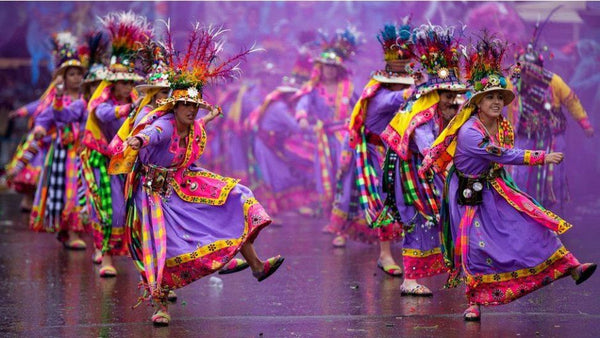
People from all over the world gather in Oruro (a Bolivian city) for the annual carnival, one of the most widely celebrated and oldest cultural traditions in Latin America, drawing crowds of up to 400,000 people each year. The 2019 event will take place the upcoming Saturday and Sunday.

Carnaval de Oruro is not just a celebration, it is symbolic of the syncretism between the Catholic ideals imparted by Colonial expansion and the thousands of years old Andean rituals in the region. After the arrival of the Spanish conquerors, the native celebration was transformed by the incorporation of a Catholic ritual focused the Virgin of Socavón, who is believed to watch over the region’s miners.

The miners of Oruro worship an underworld deity called El Tio (“the Uncle”), a devil-like creature who provides protection in exchange for cigarettes and alcohol. Every year during carnival, El Tio makes his way to the surface in the form of a diabolic dance known as Diablada. He’s eventually chased back underground by a sorority of angels.

There are more than 48 dance groups and more than 18 types of dances, some of the more well-known are the Caporales, Diablada, Kantus, Kullawada, Llamerada, Morenada, Potolo, Suri Sicuris, Tinku, Tobas and others. The most popular spot to view the parade is in the main Plaza de Armas. The parade finishes at the Santuario del Socavón where those that took part in the parade enter the church on their knees to show their devotion and faith to the Virgin of Socavón. The cultural event was declared “Masterpiece of the Oral and Intangible Heritage of Humanity” by UNESCO.
Comments will be approved before showing up.